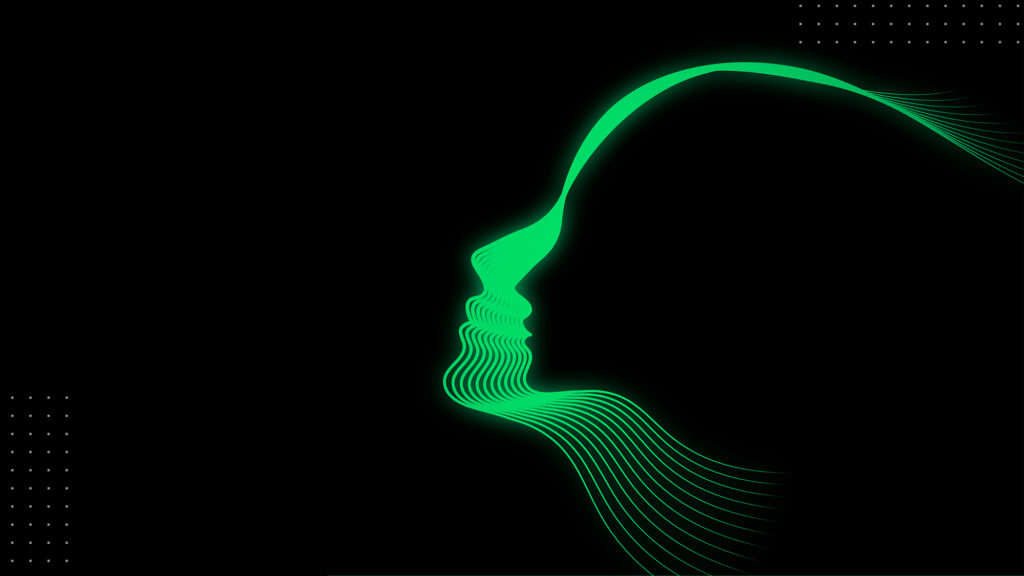Audio by Vanessa N. using WellSaid Labs
In this era of relentless digital innovation, we’re no longer just spectators but participants in an AI-generated world where our own voices and likenesses can be echoed and altered. While imitation is traditionally lauded as the sincerest form of flattery, in the realm of Generative AI cloning, such duplications often leave a bitter aftertaste.
Imagine discovering a distorted version of your own creation, or worse, your identity, crafted not by you, but by a machine learning algorithm. This is, in fact, today’s reality.
Take the recent case involving Getty Images. This premier image licensing service found itself entangled in a legal battle against the creators of Stable Diffusion, an AI tool accused of misappropriating Getty’s watermarked photographs. The key giveaway? A slightly skewed, but unmistakable, logo within the AI-generated images (see below for reference).

This incident illuminates a crucial question: When does AI-inspired creation step over the line into copyright infringement?
Generative AI, fueled by vast pools of data and complex algorithms, is swiftly permeating creative industries. It functions by digesting colossal datasets, sifting through myriad questions, and unearthing underlying patterns and relationships. This sophisticated technology doesn’t conjure content from thin air. Instead, it relies on analyzing extensive archives of images and text, processing billions of data points to formulate decision-making rules.
💡Learn more about the basics of Generative AI here!
However, this innovative method is not without its share of legal quandaries. At the heart of the matter lies the issue of intellectual property rights. The burgeoning field of AI-generated works is navigating an uncharted legal terrain. Questions about copyright, patent, and trademark infringements are still being fervently debated, with no clear consensus in sight.
The ambiguity extends to the ownership rights over content produced by AI. Should these rights belong to the AI developers, the users, or the original creators of the data? This gray area is a minefield for businesses and individuals alike. Embracing generative AI technologies without a clear understanding of these legal risks is akin to walking a tightrope without a safety net.
That’s where we step in. In this piece, we’ll provide a concise, yet comprehensive guide on the legalities surrounding Generative AI content. As the lines between human and AI-generated creations blur, understanding these legal nuances becomes crucial, not just for individuals, but for businesses and the content they produce using these AI tools.
Stay tuned for the fascinating world of AI and law. ⚖️
What are the legal concerns around Generative AI?
Generative AI, a term echoing throughout our digital landscape, carries with it a bundle of legal intricacies that are as complex as the technology itself. You’ve probably stumbled across discussions on the legality of Generative AI, whether online or in everyday conversations. Let’s demystify this topic, acknowledging the winding path that lies ahead in establishing legal frameworks.
1. Personal data and confidentiality
One pivotal aspect is data protection. Business data, encompassing financial information, strategic know-how, and trade secrets, might also be deemed confidential. This distinction is vital when inputting data into Generative AI systems. Organizations need to be meticulous in categorizing data and ensuring its lawful, secure, and confidential processing.
2. Common personal data protections challenged by AI
Despite differing laws across jurisdictions, several core principles of personal data protection consistently emerge, each posing unique challenges in the context of AI.
These include:
Transparency: Knowing how AI systems use personal data.
Data minimization: Limiting data use to what’s strictly necessary.
Lawfulness: Ensuring data use complies with legal standards.
Sensitive data: Extra caution around particularly sensitive information.
Individual rights: Upholding rights such as access to and control over one’s data.
💡Discover companies successfully practicing ethical AI here!
What is AI data laundering?
When you hear the term “laundering,” alarm bells should ring, and it’s no different in the context of AI. AI data laundering is a somewhat nebulous practice that should have all of us on high alert.
What exactly is AI data laundering?
AI data laundering is akin to its financial counterpart, money laundering. In this scenario, data, possibly obtained through illegal or unethical means, undergoes a transformation. This process masks its origins, making it seem legitimate, much like how dirty money is funneled through legitimate businesses to conceal its illicit roots.
Why is this a big deal for AI?
The integrity and legality of training data are strong ethical and performance-related too. Using compromised data raises warranted concerns about privacy, legality, and potential biases, ultimately impacting AI’s reliability and fairness.
The mechanics of AI data laundering
Sourcing data from questionable places: AI data laundering often starts with acquiring data from iffy sources, like unauthorized web scraping, theft, or non-compliant databases.
Mixing to mask the truth: This dubious data is then blended with clean data, effectively camouflaging its origins. This mixed data set might then be used to train AI systems, with its problematic parts hidden.
Application in the commercial realm: These AI models, now trained on a mix of good and bad data, may be deployed across various sectors, including everything from advertising to personalized services—unbeknownst to users.
Regulatory response
In light of such practices, there’s a growing clamor for stricter data governance and transparency in AI development. This push aims to safeguard against such laundering activities.
While AI data laundering remains a risk, it’s heartening to see a trend towards ethical practices and compliance in the AI community. The rising focus on data privacy and ethics is catalyzing more rigorous regulations and practices, forming a crucial line of defense against these dubious practices.
How do you avoid copyright infringement in AI?
Navigating the choppy waters of copyright in the age of AI requires vigilance and a proactive approach. Whether you’re creating content or using AI tools, understanding how to avoid infringement is key.
Protecting your own creative works
As an artist, safeguarding your original creations from unauthorized AI replication is crucial. As such, consider these steps:
Opt for a Creative Commons License: This can offer a layer of protection for your creative works, specifying how others can use them.
Copyright your work: It’s a fundamental step in asserting your rights and provides a legal basis for any future infringement claims.
Use Robots.txt: This tool can block website crawlers from accessing and using your images for AI training purposes.
Read the fine print: Always scrutinize the terms and conditions of image software. Some platforms might use your content for AI systems, but often offer opt-out options, albeit buried in complex legal jargon.
When you’re using AI to create content
Now, despite all of this legal jargon and precautionary measures, we still encourage you to use Generative AI solutions. After all, there’s a high likelihood that you’ll soon need to rely on some of these systems to match your content demands. Just make sure you’re practicing it safely using the following tips.
Beware of substantially similar outputs: Even if an AI-generated image isn’t a carbon copy of an existing one, it could still infringe if it contains copyrighted elements. Avoid using prompts that directly reference well-known characters or works.
Exercise caution with reference images: Platforms like Midjourney allow user-uploaded reference images. To avoid infringement, steer clear of using copyrighted images as references.
Mind the style trap: While artistic styles aren’t protectable, creating art that replicates the style of a specific, existing work can lead to legal complications. This risk escalates if you use a reference image.
Choose ethical AI solutions: Opt for AI tools known for ethical practices. This includes transparency in their use of data and respect for copyright laws.
In the rapidly evolving realm of AI, staying informed and conscientious is your best defense against inadvertent copyright infringement. It’s a delicate balance of embracing technological advancements while respecting the legal boundaries that govern creativity and intellectual property.
Concluding thoughts on Generative AI cloning rights
The future promises to be a melting pot of creativity and innovation, spurred on by the boundless possibilities of Generative AI. This fusion of technology and creativity could transform entire industries, enhance personalization, and open new avenues for artistic expression.
Yet, in this exhilarating blend, we must not lose sight of the essence of individuality. It’s this very uniqueness that fuels our drive, ignites our passions, and keeps the wheel of innovation turning. Without it, we risk descending into a monotonous world where every creation echoes the next, stripping the joy and purpose from our endeavors.
But let’s pause and ponder: Can we set ethical guardrails that nurture this individuality without curbing the vast potential of Generative AI? The answer lies in a balanced approach, where respect for rights and creativity coexists with technological advancement.
By establishing these ethical frameworks, we’re not confining our capabilities. Rather, we’re ensuring that our journey into the AI era is as responsible as it is groundbreaking.
And so, we leave you with a thought to ponder, and we urge you to do so continuously: In our quest to harness the power of Generative AI, how can we preserve the uniqueness that defines us while embracing the collective creativity that unites us?




